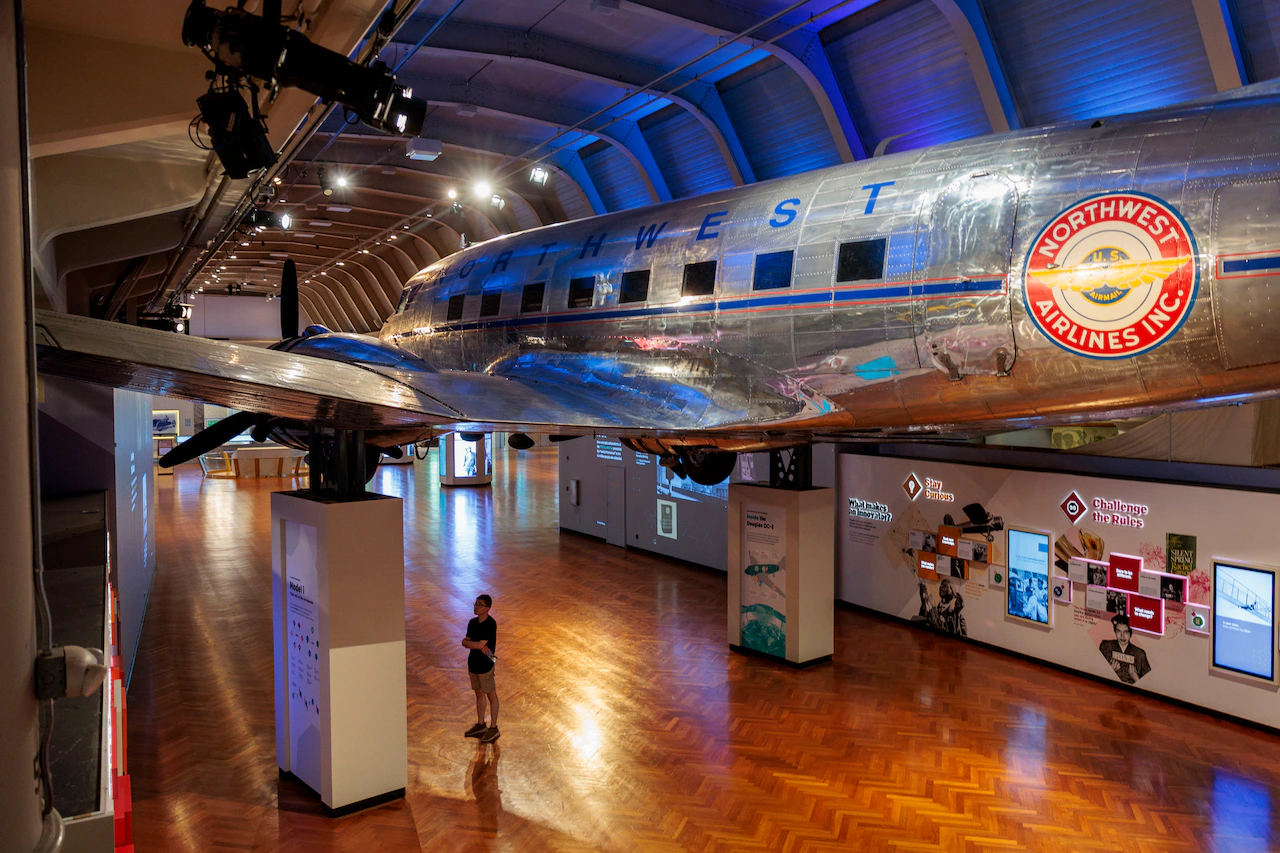
WAYNE COUNTY, MI – A sprawling museum just outside Detroit is one of the state’s most popular attractions.
The Henry Ford Museum of American Innovation in Dearborn was founded by Ford himself. It grew from his personal collection of vehicles, buildings and industrial artifacts, which he began during the construction of his Highland Park plant in 1906.
Ford opened the museum, and the neighboring history education site, Greenfield Village, to the public in 1933. Combined, the two make up the largest indoor-outdoor museum complex in the United States. About 1.6 million visitors from around the world visit each year.
The Henry Ford Museum is well-known as the home of historically-significant vehicles. It includes Henry Ford’s first car – the 1898 “Quadricycle,” as well as the presidential limousine in which John F. Kennedy was assassinated. As guests enter, they come face-to-face with the massive Allegheny locomotive, one of the most powerful steam locomotives of all time. The engine, and others like it, were driven into the museum under their own power through a massive set of doors on tracks built into the floor.
Perhaps the most famous vehicle in the museum is the Montgomery, Ala., city bus where Rosa Parks refused to give up her seat to a white passenger in 1955 – a pivotal moment in the Civil Rights movement. The bus, at the center of the museum’s “With Liberty and Justice for All” exhibit, is open for guests walk inside.
For museum director Cynthia Jones, the Henry Ford Museum’s massive collection serves an important purpose – documenting the transformation of society for future generations. Inspired by Ford’s fascination with everyday American life, the museum seeks to continue his legacy of preservation.
“We think we live in a quickly-changing time now, but Henry Ford essentially lived from the Civil War through World War II,” she said. “That’s massive change.”
Ford’s goal of documenting a changing America is built into the building’s facade itself – its central clock tower is a replica of Philadelphia’s Independence Hall, where founding fathers framed the U.S. Constitution and Declaration of Independence.
“We collect in what we call social transformation. When you enter the museum through a replica of Independence Hall, you’re entering through the idea that became America,” Jones said. “We created ourselves as a country. We have a way that we think, and our thinking changes things.”
Artifacts in the museum’s collection ranges in size, from the Highland Park plant’s massive two-story steam generator to an exhibit hall lined floor-to-ceiling with miniature Hallmark Christmas ornaments. Many exhibits, including Your Place In Time – an interactive gallery of daily life over five decades – and Buckminster Fuller’s futuristic Dymaxion House, encourage visitors to think about how rapidly American life has changed.
Current exhibits at the museum include Heroes of the Air, an early aircraft-themed area of the main hall that includes a full-scale replica of the Wright Flyer commissioned by Ford himself, various air-race-winning aircraft from the early 20th century and even early helicopter prototypes. The main entrance has guests walk under the belly of a massive Douglas DC-3 airliner.
The museum’s self-curated gallery features Bicycles: Powering Possibilities, a collection of the bikes from the earliest Draisine – a “hobby horse” without pedals – to the mass-produced Schwinns of the 1940s and 50s. Jones was most surprised by a creation of one of Ford’s employees, a heavy, but functional steed handmade from scrap as a gift for his son in 1933.
Miniature Moments: the Hallmark gallery, features massive rows of floor-to-ceiling display cases, showcasing 6,000 themed ornaments that document the evolution of pop culture from the 1973 to 2009.
“Basically, what it’s doing is tracking pop culture,” she said. “We actually do a themed can-you-find-it tour each month. It’s really neat to be able to play with these things that are so much more than Christmas ornaments.”
Upcoming exhibits at the Henry Ford Museum and Greenfield Village include DaVinci: The Exhibition, which will feature more than 65 full-scale inventions and 20 fine art studies, from early drafts of “Mona Lisa” to the “Vitruvian Man.” The exhibit will run from Oct. 26 until May 3.
Also upcoming in 2026 is the restoration of the historic Jackson home, located at Greenfield Village, which will be filled with Civil Rights-era artifacts from the museum’s collection. The home, moved more than 1,000 miles by truck from Selma, Ala., in 2025, was used by Martin Luther King, Jr. and other Civil Rights leaders during their planning of the march from Selma to Montgomery.
In total, the museum’s collection includes more than more than 26 million artifacts, including photographs, documents and objects. In an effort to make the collection more accessible, more than 160,000 objects have been digitized for educational purposes. The museum’s digital archives are available online.
“It’s not just about keeping the stuff. It’s about how the stuff can actually continue to be useful to people, continue to inspire them,” Jones said. “We can now tell you this three- or four hundred-year story of change over time.”
The Henry Ford Museum, 20900 Oakwood Blvd. in Dearborn, is open daily from 9:30 a.m. to 5 p.m. Guests can purchase tickets in advance online, and the museum offers an annual membership that includes admission to the museum, Greenfield Village and early access to exhibits.



